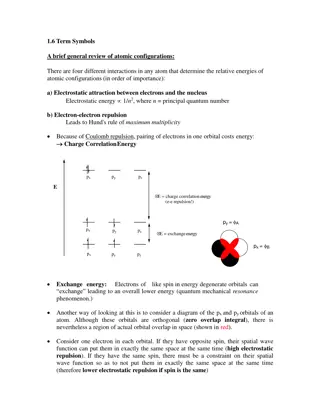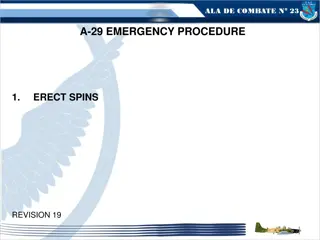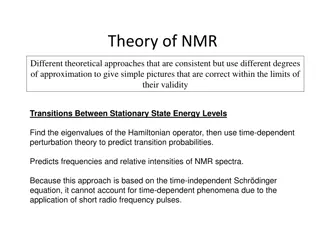
Ensuring Privacy in Network Traffic Through Advanced Techniques
Protect sensitive information in network traffic with techniques like in-network traffic obfuscation, encryption protocols, and programmable data-plane hardware. Explore opportunities to offload privacy functionality to the network and challenges in trusted edge networks. Learn about trusted edge networks and the importance of obscuring packet-header fields for enhanced privacy.
Download Presentation

Please find below an Image/Link to download the presentation.
The content on the website is provided AS IS for your information and personal use only. It may not be sold, licensed, or shared on other websites without obtaining consent from the author. If you encounter any issues during the download, it is possible that the publisher has removed the file from their server.
You are allowed to download the files provided on this website for personal or commercial use, subject to the condition that they are used lawfully. All files are the property of their respective owners.
The content on the website is provided AS IS for your information and personal use only. It may not be sold, licensed, or shared on other websites without obtaining consent from the author.
E N D
Presentation Transcript
In-Network Traffic Obfuscation Jennifer Rexford Princeton University
Privacy Threats Network traffic reveals sensitive information ? Internet 1
Privacy Threats Network traffic reveals sensitive information Encryption protocols protect the confidentiality of data But, the packet header fields still reveal a lot The identities of communicating end-points The size of the exchanged content 2
Practical Challenges IPSec tunnels Computationally expensive Tor overlay Performance overhead Users running special software Network-layer anonymity systems E.g., Hornet, Taranet, PHI, LAP, Dovetail, Cooperation from multiple ASes along the path 3
An Opportunity Programmable data-plane hardware Offload privacy functionality to the network Benefits High speed Ease of deployment Avoid relying on end users But, limited memory and processing 4
Other Opportunities Widespread encryption of payload (e.g., TLS) Data plane does not need to encrypt the whole packet Simply need to obfuscate the packet-header fields Growing ubiquity of IPv6 in the Internet core Can carry packet metadata related to encryption Importance of UDP-based transfers Request-response protocols like DNS and NTP Connection migration in WireGuard VPN and QUIC 5
Trusted Edge Networks Edge network Providing extra privacy for users as a value-added service All hosts run unmodified applications ? Trusted edge Internet client servers 6
Challenges Obscuring the packet-header fields at line rate Delivering return traffic without cooperation Not relying on symmetric routing Working with unmodified applications and protocols Avoiding performance penalties Trusted edge Internet client servers 7 7
Two Trusted Edge Networks SPINE: Per-packet traffic encryption in switches in the two trusted edge networks with no need for end-host support, for both connectionless and connection-oriented traffic. ? TCP + UDP TCP + UDP Trusted edge Trusted edge Internet 8 Trisha Datta, Nick Feamster, Jennifer Rexford, and Liang Wang, "SPINE: Surveillance Protection in the Network Elements." in FOCI 2019.
Connectionless Traffic PINOT: In-network encryption of connectionless traffic between a trusted network and public connectionless services (e.g., DNS, NTP, and WireGuard VPN). ? UDP UDP Trusted edge Internet DNS, NTP, or WireGuard server 9 Liang Wang, Hyojoon Kim, Prateek Mittal, and Jennifer Rexford, "Programmable In-Network Obfuscation of Traffic," in arXiv 2020.
Connection-Oriented QUIC Traffic MIMIQ: Flexible client IP address randomization via QUIC s connection-migration and programmable switches, with unmodified client apps and QUIC server. ? UDP UDP Trusted edge Internet QUIC server QUIC client 10 Yashodhar Govil, Liang Wang, and Jennifer Rexford, "MIMIQ: Masking IPs with Migration in QUIC, in FOCI 2020.
Family of Solutions Target traffic Encryption Scenario Key Idea SPINE [FOCI 19] All IP/TCP header Two trusted edge ASes One edge AS P4, IPv6 encoding, line-rate encryption P4, IPv6 encoding PINOT [arXiv] Connectionless Client IP MIMIQ [FOCI 20] Connections Client IP One edge AS P4, QUIC migration 11
SPINE: Shared Keys (key, version number) TCP + UDP TCP + UDP Trusted edge Trusted edge Internet SPINE SPINE 12
SPINE: Per-Packet Nonce Per-packet nonce Encrypt(ip, key) = ip XOR Hash(key, nonce) The nonce is a randomly-generated bit string carried in the data packet (so it is public) Each packet carries Key version number Nonce So, the receiving switch can decrypt the packet Even if packets arrive at different receiving switches 13
SPINE: IPv6 Challenges Sending encryption metadata Discerning which traffic is SPINE traffic Ensuring successful routing Solution: IPv6 addresses Carry information for receiving switch to decrypt the IPv4 header Use a separate address block for routing the traffic Encrypted IPv4 Address Nonce Reserved IPv6 Prefix Version # New IPv6 Address 14
SPINE: P4 Data Plane Central Controller SPINE Tables Routing Tables Trusted Edge #2 Trusted Edge #1 SPINE SPINE R1 R2 SPINE Program Check IPv4 Dst Addr Encrypt if necessary Check IPv6 Dst Addr Decrypt if necessary Set Deparse headers Parse headers forwarding port 15
SPINE: Summary Simple data-plane encryption Only the header fields (e.g., IP addresses, TCP seq/ack) Stateless (nonce and key version carried in packets) Limitations Cooperation from sending and receiving networks P4 prototype running only on a software switch Encryption scheme (SipHash) difficult for line-rate hardware 16
PINOT: One Trusted Edge Network Client in a trusted network Using connectionless public services (e.g., DNS, NTP, WireGuard) ? UDP UDP Intermediate ASes Trusted AS DNS, NTP, or WireGuard server 17
PINOT: Improvements Over SPINE Better line-rate crypto SipHash solution (Spine) and AES are too expensive Two-round Even-Mansour (2EM) is a good compromise (see paper) Mapping server address to IPv6 Client sends an IPv4 packet Client IP encrypted into IPv6 address Server IP mapped into IPv6 address for known services Hardware switch prototype (on Barefoot Tofino) Deployed in the Princeton campus network! 18
PINOT: Princeton Deployment AWS WireGuard Server EC2 Trusted Network Web services Internet DNS NTP IPv4 IPv6 WireGuard VPN IPv6 Gateway DNS, NTP public servers PINOT End-host 19
PINOT: Summary Privacy for connectionless services DNS, NTP, and WireGuard VPN services Line-rate IP address encryption in the Barefoot Tofino Deployment on the Princeton campus network Limitations Need to determine the remote server s IPv6 address Encryption consumes non-trivial switch resources Only for connectionless public services 20
MIMIQ: Connection-Oriented Connection-oriented services Multiple packets in the same connection Using the increasingly popular QUIC protocol ? QUIC QUIC Trusted edge Internet QUIC server QUIC client 21
MIMIQ: Connection Migration QUIC connection migration QUIC clients can change their IP addresses within the lifetime of a single connection 1.1.1.1 Internet 2.2.2.2 Designed for client mobility, but useful for privacy! 22
MIMIQ: Client Unlinkability QUIC encryption Packet payload Other header fields (e.g., sequence/ACK numbers) Information used in migration (e.g., new connection ID) QUIC congestion control QUIC restarts congestion control upon migration Migrated connection looks like a new connection but, at some (modest) performance penalty 23
MIMIQ: Evade Fingerprinting Long flows provide sufficient information: Client is visiting a specific site and page srcIP = 1.1.1.1 Client Server ? Short flows contain less information: Can t reliably make decisions srcIP = 1.1.1.1 srcIP = 1.1.1.2 Client srcIP = 1.1.1.3 Server 24
MIMIQ: Dynamic IP Addresses Avoid address collisions Avoid assigning an IP address to multiple clients at the same time and wait to reuse an IP address to deliver in-flight packets Address allocation server Address allocation server Assign random unique IPs to clients No need for cryptographic operations Similar to a DHCP server! Trusted edge 25
MIMIQ: Deliver Return Traffic Deliver return traffic to clients Client IP addresses keep changing so switches need to update their forwarding rules 1.2.0.0/16 QUIC Internet QUIC server IP learning 26 Runs using Mininet and the Chromium QUIC implementation with unmodified server!
MIMIQ: Deliver Return Traffic Larger trusted network Embed edge switch IDs in the client IP addresses Enables small forwarding table in border switch Change ID assignments and sets of bits over time S3 1.2.0.0/16 QUIC Internet border switch QUIC server S7 27
In-Network Traffic Obfuscation Target traffic Encryption Scenario Key Idea SPINE [FOCI 19] All IP/TCP header Two trusted edge ASes One edge AS P4, IPv6 encoding, line-rate encryption P4, IPv6 encoding PINOT [arXiv] Connectionless Client IP MIMIQ [FOCI 20] Connections Client IP One edge AS P4, QUIC migration 28
Conclusion In-network traffic obfuscation Practical user privacy With good performance and ease of deployability Leveraging programmable switches (and other trends) More generally Internet security and privacy are hugely important Programmable switches offer a deployment path This is just the beginning! 29
Thanks to My Collaborators Liang Wang Hyojoon Kim Prateek Mittal Nick Feamster Trisha Datta Yashodovar Govil 30






















